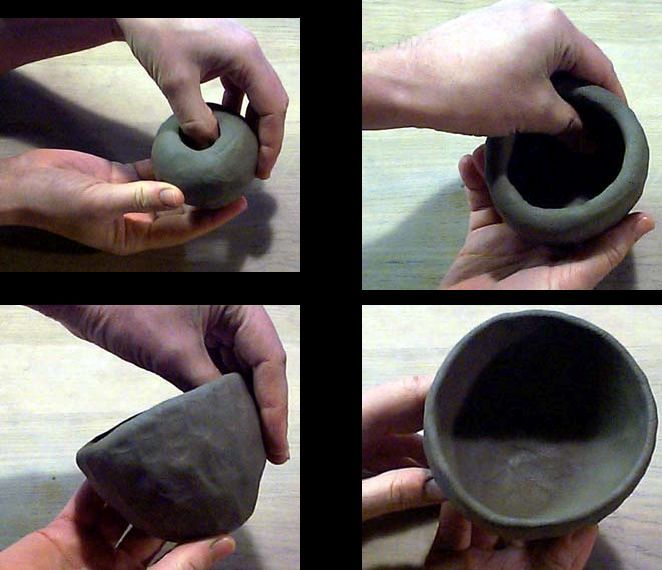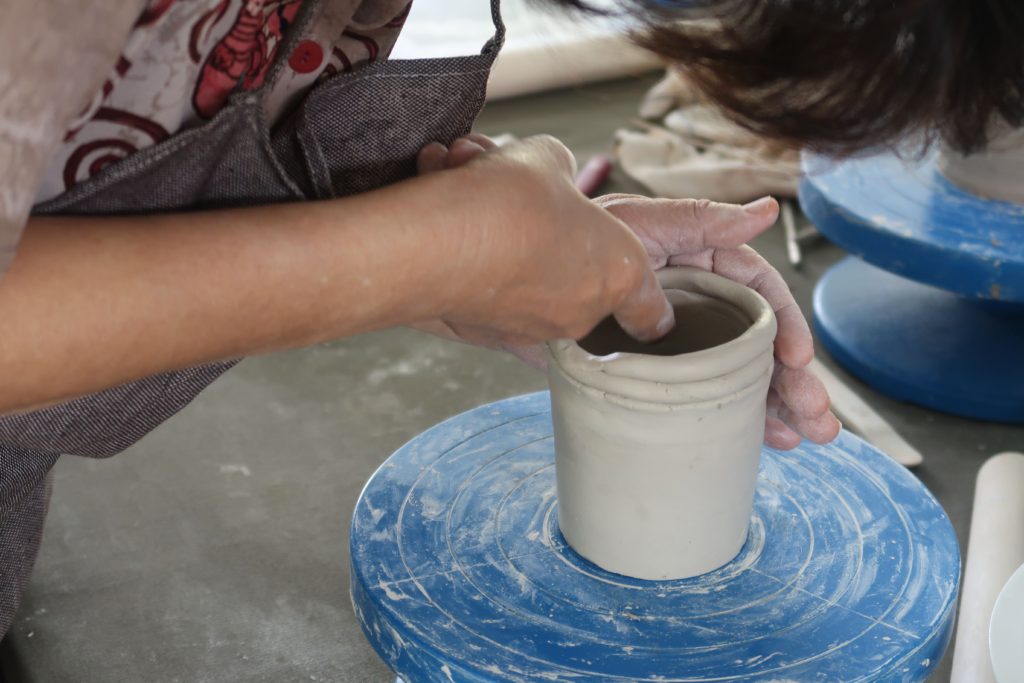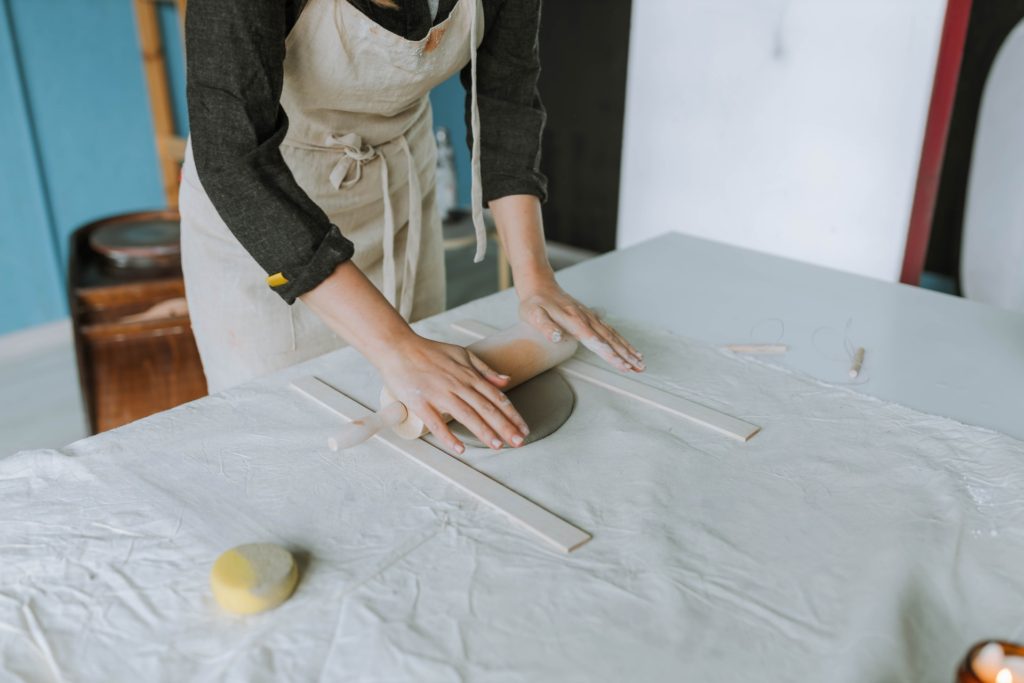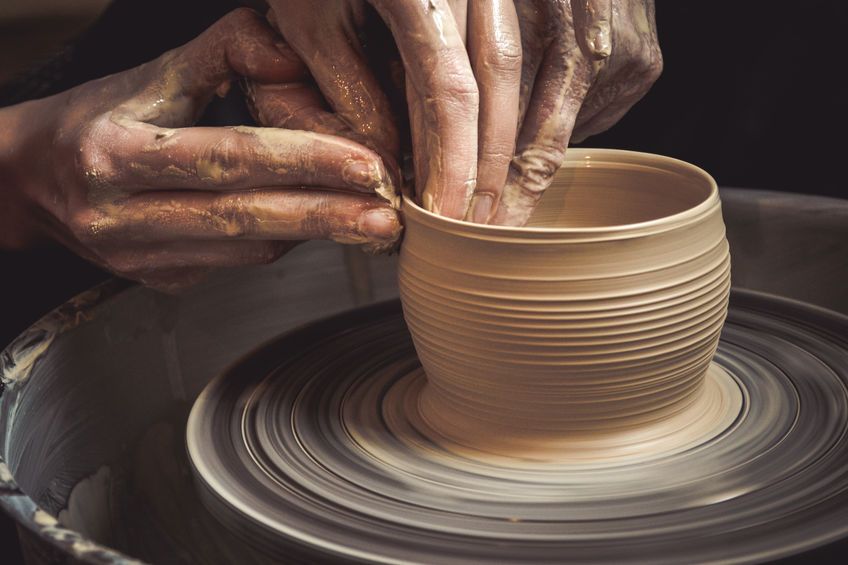Course Outline
De-stress yourself with the therapeutic touch of clay
The Clay House workshop offers classes from Tuesday to Sunday for students at all levels.
Beginners will learn how to prepare clay and use different hand building techniques, starting from pinching, coiling to slab building to make various forms, from functional vessels to sculptured objects. Hand building techniques are fundamental and the best way to understand the whole process of pottery making.
After you become familiar with hand building or if you are already an intermediate student, you can try throwing on the potter’s wheels to create more forms of vessels such as mugs, bowls, plates, vases and tea pots.
Our regular classes are conducted once a week, four weeks a month commencing at the beginning of each month. However, we also offer floating classes for students who need more flexibility.
Class details

Piniching
Pinching is the most ancient hand building technique to create a simple pot from soft clay. This will also be what you learn in your very first class of pottery. After you prepared a clay, you'll hold a ball of clay in one hand. The size of ball has to fit your palm nicely so that you have better control over the shape. Then you press a hole in it to create an opening, then continue to slowly rotate the ball as you squeeze the wall to create a container form. It can be a V shape, U shape and irregular form of your choice. It is always good if you have a shape in mind before your begin but as you started to work on the clay, you'll notice that it's every easy for the clay to take its own direction. That's also the fun part of pottery.

Coiling
This handbuilding techniqe involves making forms from coils of clay. Just like making noodles, you role out the coils of clay using your palm on a flat surface that does not stick. Rotate the coils several times as you thinning it, yet keeping it round and even. Unlike noodles, you don't need to make it think like hair and the final thickness should be just a little less than 1cm in diameter and you don't need one long coils of clay for the entire pot. You can join the coils together when the clay is still soft. The benefit of this handbuilding technique is that it allows you to create large, regular and irregular forms. It's a great technique for sculpture too.

Slab Building
Slab building allows you to create angular and pots with sharp edges. Depending on the form that you want to create, you can use either hard or soft slap to build your ideal form. One of the way of making slab built pottery is that design the basic form with using cardboards or paper, then , dismantled the cardboards and use them as templates. you will have to flatten the clay by pushing, beating, rolling and throwing actions. Then place the template on the slabs and cut out the shape using a pin. The last step will is joining the slabs together , smooth the edges or add texture with various tools.

Throwing
Watching professional artists throwing on potter's wheel make it seem deceptively easy. In fact, this skills requires lots of practice, patience and concentration. STEP 1 | Clay preparation You still need to prepare a well-wedged clay before you start throwing it on the potter's wheel. STEP 2 | Centering Position the ball of clay in the exact center of the wheelhead by a few repeating lifting and pressing down the clay in cone shape. STEP 3 | Open up the clay. STEP 4 | Lifting. Lift the roll of clay to start raising the walls of the pot. Cylinder is the most basic form of all shape. You will have to repeat lifting to thin the wall and make it taller. Step 5 | Shape the pot.
